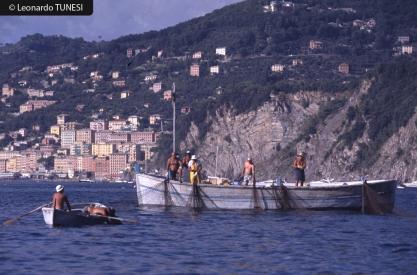Search
Stock Assessment of selected species of Elasmobranchs in the GFCM area
Workshop on Stock Assessment of selected species of
Elasmobranchs in the GFCM area
12 - 16 December 2011, Brussels, Belgium
RAC/SPA was present at Brussels for the workshop on stock assessment of selected species of Elasmobranchs in the GFCM area from the 12th to the 16th of December 2011 alongside representatives of the European Union (EU), the GFCM Secretariat and 25 experts from Algeria, Bulgaria, Croatia, France, Ireland, Italy, Morocco, Romania, Syria, Tunisia and Turkey.
This meeting was an occasion to discuss the situation of stock assessment of selected species together with the illustration and support of analyses carried out in this domain.
The following general conclusions were drawn from the workshop:
- Data Deficiencies
- Official statistics
-
Fishermen may not take care when completing landings data records, for a variety of reasons;
-
Administrations may not consider that it is important to collect accurate data for these species, or do not have adequate data collection systems in place;
-
Some species could be underreported to avoid highlighting the level of by-catch;
-
Some small inshore vessels may target (or have a by-catch of) certain elasmobranch species and the landings of such inshore vessels may not always be included in official statistics.
- The use of generic landings categories
- Port sampling data
-
Need to improve correct species identification, both for full specimens and for uncompleted carcasses landed at port after finning or trunking.
-
Difficulties on ageing elasmobranchs – Standardized methods (spines, vertebrae, length frequency methods) and protocols should be agreed.
-
Need to establish biological reference points for most species.
-
Need to harmonize values of Biological Parameters and be well aware of the influence these parameters have on the final results of the assessment. The GFCM Biological Parameters database is a good tool towards this process.
-
The importance of comparative studies among neighbouring countries, such as the cases of Black Sea, Adriatic Sea and Alboran Sea, and to combine information in order to obtain more complete picture of the stocks situation.
Assessments, in the main, have been hampered by a lack of reliable data. While survey data are available, both at a national level, and from co-ordinated surveys such as MEDITS, commercial data is not available in the same quantities and detail. The lack of length data from the commercial catch composition limits the types of stock assessment that can be carried out. There are three main data issues, two related to official landings statistics, the other to commercial data.
While the availability of official landings statistics is improving, there appears to be an underreporting of landings, as compared to data available from individuals at the meeting. This can be for a number of reasons:
Where landings data are supplied, they are rarely available at species level. Catches are frequently supplied to the GFCM in generic categories such as “Sharks, rays, skates etc.”. The problems associated with this approach have been documented in other regions (ICES 2006, Johnston et al. 2005). The use of generic categories means that accurate species assessments are not possible, as the proportion of individual species within these categories cannot be calculated. Trends in landings or CPUE cannot be seen when landings are declared to these levels.
Stock assessment models require data on the age or length composition of the commercial catches. Port sampling programmes are required to collect these data. These programmes would have the added benefit of proving additional data that would help separate the generic catches outlined above into their constituent species.
The workshop agreed on the following recommendations:
-
Commercial data collection programmes for both targeted and by-catch species and by-products should be developed in a standardized way at regional level with harmonized protocols based on the existing FAO and other guidelines already published.
-
Elaboration of field practical guides for identification of the species and dissemination of the existing ones.
-
Enhance capacity building through training workshops to improve knowledge on assessing the age such as the one being organized by the GFCM within the framework of the “medium term research program to improve the knowledge on elasmobranchs” currently in force and that will be held from 12 to 16 March 2012 in Antalya, Turkey. Identification training workshops as well as on quantitative analysis are also advisable.
-
Make use of the existing experience on the work in other areas, to use available methodologies to assess the status in cases of data shortage as for the specific cases of long lived species.
-
To create a multi-choice table to facilitate the selection of methods to be used, adapted to the data available and to the Mediterranean context (data shortage).
-
The research institutions from neighboring countries sharing stocks should strengthen their collaboration.
-
Collaboration needs to be granted among the organizations dealing with conservation issues (e.g. IUCN, RAC/SPA) so as not to duplicate efforts, base their evaluations on the most sound scientific knowledge, and also improve the consultation process with the GFCM.




Find Us On...